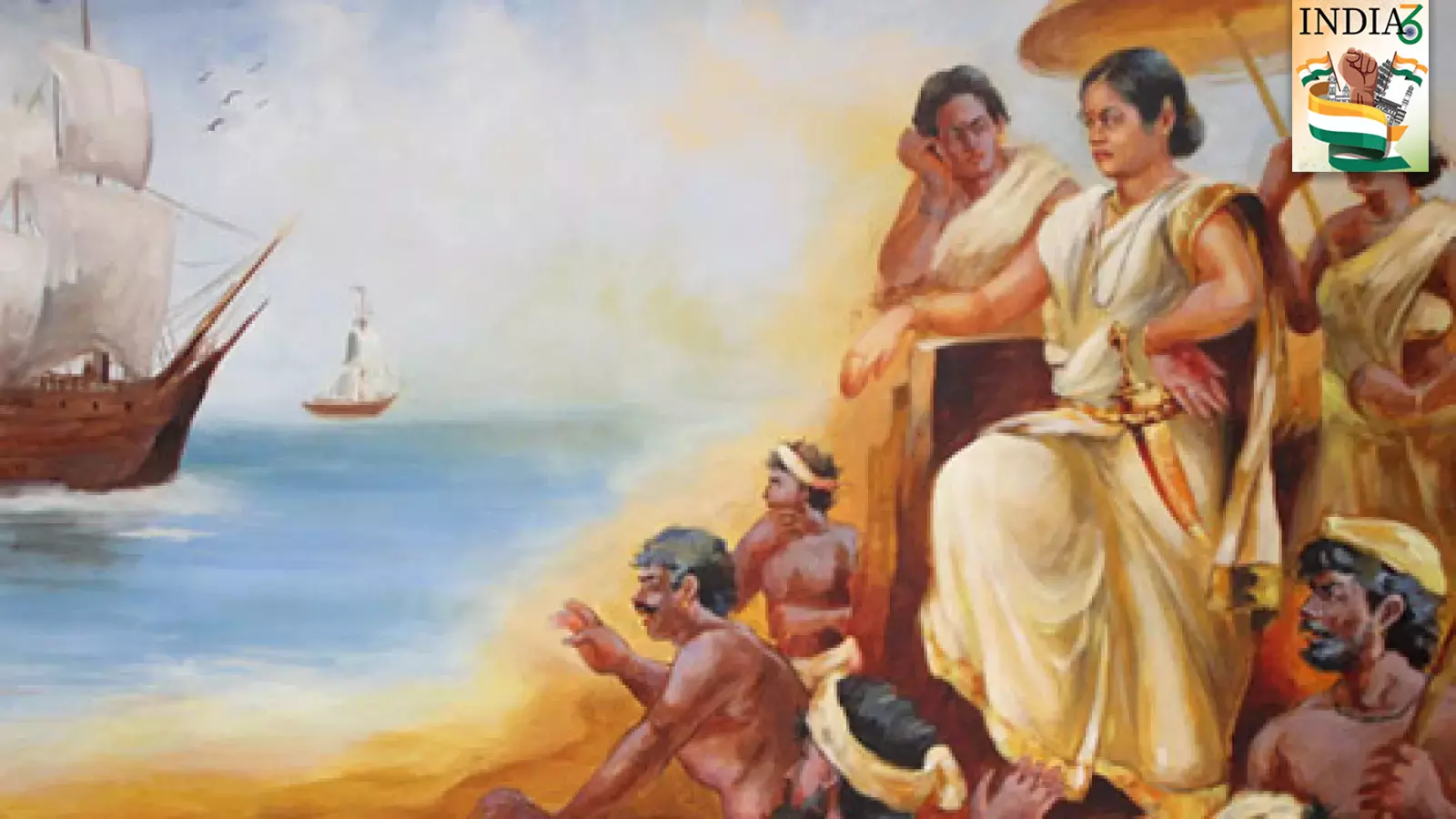India’s Struggle for Independence: Untold stories and forgotten threads from the South
The Federal presents an exclusive Independence Day package that shines a spotlight on the often-overlooked stories from the southern states


The narratives of northern India often dominate historical accounts of the struggle for independence. As India celebrates its 76th Independence Day, it is imperative to acknowledge that the history of the freedom movement stretches beyond the North. As part of the special I-D package, The Federal puts the spotlight on four little-known stories from Karnataka, Kerala, Andhra Pradesh-Telangana. These stories are not mere footnotes but integral threads that helped shape the nation’s fight against colonial rule.
Attingal Rebellion
First up, the Attingal Rebellion of 1721 holds a significant place in India’s history as the first organised revolt against British rule in Kerala and the nation as a whole. This rebellion occurred in Anchuthengu (Anjengo), a crucial British settlement, where a fort had been established by the British East India Company in 1695. The local population’s resentment towards the British presence grew due to their manipulative practices in the pepper trade and domineering behaviour.
Under the leadership of local chieftains, the people of Attingal and Anchuthengu revolted, attacking a contingent of British soldiers and laying siege to the Anjengo fort for several months. The rebellion —considered a cornerstone of India’s independence movement, it showcased unity among different communities against technologically advanced British forces — was eventually suppressed by additional forces from British Malabar. The role of Umayamma Rani, the queen of Attingal, is debated among scholars, with some asserting her involvement in supporting the mutiny. Sadly, the event's historical significance has often been overlooked or downplayed.
Bhalki Conspiracy
Over a century later, the 1857 sepoy mutiny, which ignited in northern India, reverberated across the country. The year 1862 saw the emergence of Bhalki Conspiracy in Hyderabad. Rao Saheb Peshwa, believed to be connected to Peshwa Nana Saheb, was arrested for plotting an attack on the Nizam and the British Residency. His popular support made his apprehension a challenge, reflecting the sentiment against colonial powers. The Bhalki Conspiracy case implicated 59 people; the subsequent trials resulted in sentences ranging from fines to life imprisonment. Rao Saheb’s suicide in custody marked the quiet end of the last echo of the 1857 mutiny. This is the focus of our second feature.
INC and the Nizams
Our third story explores why it took over 60 years for the Indian National Congress (INC) to enter Nizam’s dominion: Hyderabad. The INC was established in 1885, but its arrival in Hyderabad was delayed by decades due to factors like Mahatma Gandhi's cautious approach and restrictions by the Nizam government, which considered the term “Congress” politically potent. Despite spreading Gandhian ideals, the Congress party faced bans and stalemates until 1946 when, amid the push for independence, the ban on the Hyderabad State Congress was lifted and it joined the “Join India” movement against the Nizam’s rule.
Rani Abbakka Chowta
Lastly, the saga of Rani Abbakka Chowta, a Jain queen from the Tulu-speaking area of Mangalore who represented the matrilineal Chowta dynasty in Tulu Nadu, illustrates the South’s resistance against colonial powers. She rallied Muslims, fishermen and women as soldiers to thwart the Portuguese conquest of Mangalore port. Often hailed as India’s first female freedom fighter (1525-1570), Queen Abbakka not only confronted the Portuguese army but also demonstrated her ability to unite people of various faiths against their armed forces. From maritime battles to her women's battalion, her legacy lives on through folk songs, performances, and even a coastal patrol vessel in her honour.
When Issuru declared independence
Issuru, a small and quaint little village in Shikaripura taluk of Shivamogga district in Karnataka, was once an obscure locale, unknown to the outside world. However, 71 years ago, it catapulted to the national consciousness by declaring its independence from the British Raj, establishing a ‘prati-sarkar’ or parallel government. Issuru’s rebellion took the nation by storm, and even Subhas Chandra Bose, in his address on Azad Hind Radio, paid tribute to the village’s martyrs, who raised the banner of revolt against imperial rule.
The 1780 Mutiny of Vizagapatam
Often overshadowed by the 1857 Indian Rebellion, the 1780 Mutiny of Vizagapatam was India’s first sepoy mutiny, marking a seminal challenge to British dominance. Led by local Muslim sepoys, the revolt in Vizagapatam was triggered by unfulfilled wage promises and mistreatment of Indian workers at the hands of British superiors. The uprising, sparked by orders to join the Carnatic War, turned violent when sepoys, led by Shaikh Mohammed, fired on British officers, leading to casualties. The mutiny liberated the town and instigated looting. Despite its short duration, the rebellion prompted significant administrative and military reforms by the East India Company.
The Vellore Mutiny, a violent uprising against the East India Company in 1806, stands as another symbol of resistance against British oppression in the South. The resentment towards changes in the sepoy dress code ignited the revolt, with Hindu and Muslim sepoys united in protest. The rebellion, partly aided by Tipu Sultan’s sons, led to a day-long confrontation resulting in casualties and the suppression of the uprising by British forces. Other incidents like the assassination of British Collector Ashe, the bravery of Thookkumedai Rajagopal, and the poetic fervour of Subramania Bharati all played their part in stirring the spirit of the freedom struggle in Tamil Nadu. From musicians to journalists, cultural icons inspired the masses, reminding us of the often-overlooked contribution of South India in India’s fight for independence.
These stories not only enrich our understanding of India’s struggle for independence but also underscore the broader point that the fight against colonialism was not confined to one region, but a collective endeavour that shaped the destiny of a nation — a fact that mainstream historical accounts tend to overlook.

